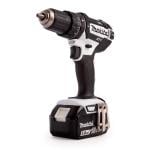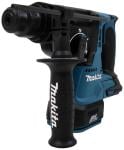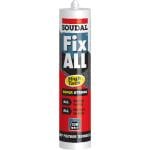How to Repair Water-Damaged Wood
In this article, we will delve into the step-by-step process of restoring water-damaged wood to its former glory. Whether you're dealing with a water-stained wooden floor, furniture, or any other wooden item, we've got you covered.
Understanding Water Damage
Water damage to wood can occur due to various reasons, such as flooding, leaks, or prolonged exposure to moisture. When moisture penetrates the wood's surface, it can lead to warping, discolouration, and even mould growth. Addressing water damage promptly is essential to prevent further deterioration and preserve the beauty of the wood.
Assessing the Damage
The first step in repairing water-damaged wood is to assess the extent of the damage. Carefully examine the affected area to determine the level of moisture penetration, warping, and any signs of mould growth. Understanding the scope of the problem will help you plan your restoration process effectively.
Removing Mold and Mildew
If you discover mould or mildew on the water-damaged wood, it's crucial to address this issue before proceeding with any repairs. Mould can spread rapidly and pose health risks, so take necessary precautions and wear protective gear when dealing with it. Use an appropriate mould cleaner to safely remove the mould without damaging the wood surface.
Drying the Wood
Before attempting any repairs, ensure the wood is completely dry. Depending on the extent of water penetration, this may take some time. Use dehumidifiers and fans to expedite the drying process, but avoid using direct heat, as it may cause the wood to warp further.
Repairing Minor Damage
For minor water damage, such as surface stains or light warping, you can try using simple DIY methods to restore the wood. Sanding the affected area, followed by refinishing, can often do the trick. Choose a stain that closely matches the wood's original colour for seamless blending.
Addressing Major Damage
In cases of severe water damage, such as deep warping or extensive mould growth, it's best to seek professional help. A skilled wood restorer will have the expertise and tools to tackle major water damage effectively. They may need to replace certain sections of the wood or employ advanced techniques for restoration.
Applying Protective Finish
After completing the repairs, it's vital to apply a protective finish to the wood. This finish will not only enhance the wood's appearance but also safeguard it from future water damage. Choose a finish that is suitable for the wood type and the item's intended use.
Preventive Measures
Prevention is always better than cure when it comes to water-damaged wood. Take these preventive measures to safeguard your wooden items:
- Regular Inspection: Routinely inspect your wooden furniture, floors, or structures for any signs of water damage or leaks.
- Proper Ventilation: Ensure proper ventilation in areas where wood is present to reduce moisture buildup.
- Use Coasters and Mats: Use coasters and mats to protect wooden surfaces from water spills and condensation.
- Fix Leaks Promptly: Address any plumbing leaks or water-related issues promptly to prevent water damage.
Conclusion
Repairing water-damaged wood is a meticulous process that requires attention to detail and careful execution. By following the steps outlined in this guide and taking preventive measures, you can ensure that your wooden items stay beautiful and free from water-related issues.
Remember, when in doubt or dealing with significant damage, it's best to consult a professional wood restorer for optimal results.








